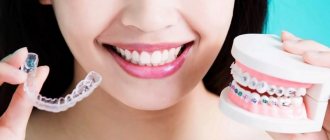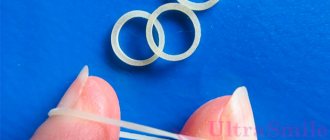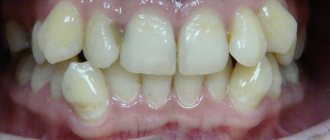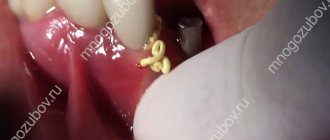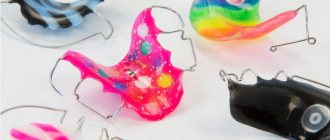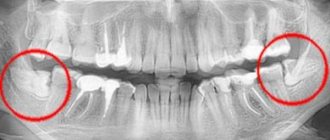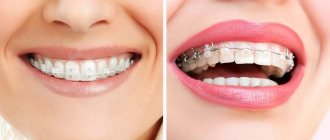The Tooth Fairy is one of the most popular characters in American folklore. A considerable part of children around the world sincerely believe in her, films and cartoons are made about her, she advertises dental services and hygiene products...
She is usually represented as a classic fairy - a little girl with wings, dressed in a beautiful dress. She flies to the children at night to pick up their lost baby teeth, and leaves a coin in their place.
Belief in the tooth fairy is believed to help children cope with the fear and anxiety caused by tooth loss. It also convinces them to be more attentive to their own health and hygiene - especially if you clarify that the fairy does not pay for rotten goods.
But why is she even doing this? Why does she need baby teeth? How much does she pay for them, and where does she even get the money?
A little about fairies
Although the tooth fairy seems like something fashionable and modern (especially to residents of the CIS countries, who learned about its existence only in the 90s), the roots of this myth go deep into history.
Spanish tooth mouse Pepper illustrated by Mariano Pedrero
Like many mythological characters, she came to America along with immigrants from Europe. Although the collector of children's teeth was not as popular there as overseas, especially when compared with ordinary fairies and elves, its analogues exist in almost all European countries and their former colonies.
In some places, instead of fairies, children are visited by angels or the souls of other children sent from heaven. However, in most cases, the role of the tooth fairy is played by mice. For example, in France these are just tooth mice, in Italy - Topolino, in Spain - the mouse Pepper. The latter also moved overseas and gained some popularity in Mexico and other Spanish-speaking countries.
If you look a little deeper into history, in the Scandinavian countries they paid for baby teeth... berserkers. Viking warriors considered such teeth to be a talisman that brought good luck in battle and sometimes made themselves entire necklaces from children's teeth. A reflection of this belief even made its way into the Eddas, where Tand-Fae is mentioned - a fairy who collects teeth. Which is the earliest description of the tooth fairy.
Teeth “as a keepsake” - is it worth keeping?
The first baby teeth are of great importance for mothers, not only when they erupt, but also when they fall out. Many mothers keep things that are memorable to them from their baby (tags from the maternity hospital, a footprint and handprint, a cut lock of hair, etc.). When milk teeth are replaced by permanent ones, mothers do not always decide to throw away the teeth, so they store them along with other things the child has that are dear to them.
But is it possible and worth saving baby teeth? There are many beliefs about where a child's teeth should be placed. Some are inclined to dispose of them, while others, on the contrary, attach great importance to this moment and the tooth itself. Disposal does not have any bad consequences, just like storing the tooth. If you leave a baby tooth at home, over time it may simply crumble or dry out.
The storage of baby teeth can be approached from the other side - scientifically. British scientists have proven that stem cells can be extracted from the pulp of a baby tooth, which are increasingly used in the fight against serious diseases and in cosmetology. Scientists were also able to prove that dental pulp stem cells are “stronger” than those obtained from the umbilical cord connecting mother and child. But the properties of a tooth can only be preserved if it is stored correctly. To do this, you can contact the stem cell center.
Why does the tooth fairy collect teeth?
A superstition associated with witchcraft stretches back from the Middle Ages - possessing someone else’s tooth can give power over the person to whom it belonged (therefore, especially superstitious inhabitants of the Dark Ages preferred to burn lost teeth rather than give them to a fairy, who was also considered by the church to be a lesser demon).
A not-so-kind version of the tooth fairy from Hellboy 2
This suggests a logical conclusion - for a small fee, tooth fairies gain power over a huge number of people. What some modern postmodernist creators recall - for example, Terry Pratchett in the book “Santa Hryakus”.
However, usually the tooth fairy is a positive character and does not use children’s teeth to gain world domination. You can often come across the version that she collects teeth in order to maintain children's faith in fairies. After all, if they stop believing in her, she will disappear. This option is described in the cartoon “Keepers of Dreams”.
A less popular, although also quite obvious reason is shown in the French cartoon about the French analogue of the tooth fairy “Ernest and Celestine” - mice collect teeth in order to build their underground cities with their help - their entire civilization literally stands on children’s teeth.
Help from doctors from the Shifa clinic
But, unfortunately, not all children know how to properly brush and care for their teeth. The dentists of the Shifa clinic come to the rescue. Attentive and kind doctors will conduct a preventive examination and be sure to explain to the kids:
- Which toothbrush is better to choose?
- Which pasta is more suitable for children depending on their age.
- What movements should you use to brush your teeth?
- What mouthwash is recommended to use after brushing your teeth?
- How often should you visit the dentist?
- What products will help keep your teeth white and intact?
And experts will tell adults in confidence where modern parents put their children’s lost teeth. It turns out that these organs are a source of stem cells, so they can be stored in special stem cell bank laboratories. And if you suddenly need a transplant or complex anti-oncological treatment, baby teeth will come to the rescue. This is the modern idea of medicine about these temporarily existing organs.
A milk bite does not last long, unlike a permanent one. Therefore, in order for your molars to last as long as possible, monitor their health and be sure to come for a preventive appointment with the dentist. The Shifa clinic provides comprehensive examination and treatment of the condition of the dental system. Sign up for a consultation at a convenient time!
How much does the tooth fairy pay?
(Do I need to clarify that the price for teeth is determined by parents?)
Mythology does not specify the exact price, but it is said that the fairy leaves one coin for one tooth. And money in coins in our time is much less than money in papers...
In 2013, the Visa company (the same one that produces payment cards) conducted an interesting study, during which the exchange rate of the teeth of small American capitalists in relation to the dollar was clarified - on average, a fairy leaves a child 3.7 dollars, that is, about 280 rubles in modern terms course.
Signs of different nations
Modern people prefer not to believe in omens or to hide their superstition. Some traditions remain, but most of the absurd beliefs are still a thing of the past. Thus, in ancient times, it was believed that not only milk, but also permanent teeth must be disposed of after they fall out or are removed, since sorcerers, witches or magicians can steal them and use them for rituals or conspiracies. Each nation had its own examples and beliefs, which often have many similarities.
English
In Great Britain it was customary to burn baby teeth as soon as they fell out. In this way, parents prevented the risk of damage to the child or the entire family. The British were also of the opinion that if you bury a tooth in the ground, a healthy and strong tooth will definitely appear in its place.
Slavs
The Slavic tradition was closer to our people. Children believed that after a tooth fell out, it was necessary to put it behind the stove or in some corner, where a mouse or brownie would definitely find it and take it. The baby tooth was replaced by a healthy permanent one.
Europeans
A somewhat interpreted belief existed in European countries, where they believed that the tooth should be placed under the pillow, from where a small mouse would take it. In return, she would leave treats or a coin. This tradition is maintained by most families today.
Gypsies
After a baby tooth fell out, at night it was buried deep in the ground, while reciting a spell, or thrown into a field on the moon. Thus, good luck was attracted to the child, which was supposed to accompany him all his life.
Diagnosis of tooth loss
If the first signs of disease are detected, and even more so of loose teeth. If the problem is ignored, the tooth will be lost forever. The doctor will ask you to take the necessary tests, take pictures, make a diagnosis, taking into account information about previous or existing diseases, and prescribe treatment. The main diagnostic methods are x-rays and, in some cases, dental computed tomography.
In the case when a patient suffers from a chronic disease, tooth loss is a consequence, the elimination of which will be an insufficient measure. The solution is comprehensive treatment of the underlying disease together with a specialized specialist.
First steps in case of loss
A baby whose milk elements begin to change does not need painkillers. Adults think that the procedure of changing units is extremely unpleasant for the child, but before the tooth begins to loosen, the roots in it dissolve.
The loss causes discomfort, but the teeth do not hurt. A wound remains in place of the organ, which bleeds a little. Children easily tolerate a change in bite.
Losing teeth can be a shock to little ones, so parents should explain to them that this is normal, and new healthy teeth will soon grow and remain forever. At the age of 7-14 years, the oral cavity needs careful hygiene, and after removal, the following rules must be followed:
At what age do children lose their first teeth?
According to statistics, the first baby tooth leaves the socket when the child turns 5-6 years old. The process of changing teeth occurs gradually (otherwise babies would not be able to chew).
Various factors influence the age at which a baby’s first molars appear:
- health of baby teeth;
- fetal development during pregnancy (the rudiments of teeth appear in the womb);
- characteristics of the baby’s body.
Swelling and gumboils after milk tooth extraction
The surgical dental procedure is quite traumatic. When a baby tooth is extracted, tissue and blood vessels are torn. The child does not feel pain under anesthesia, but almost always experiences stress. Therefore, common consequences include a slight rise in temperature, swelling after the removal of a baby tooth, a small bruise in the projection of the extracted unit, the whims and bad mood of the baby.
In the case of edema, parents should monitor closely. Within normal limits, swelling persists and even increases in the first three days after removal. After this, the swelling should subside. But in some cases the situation begins to worsen. Improper healing, infection or pathology is indicated by:
- high temperature - more than 38 degrees;
- gumboil - a very swollen cheek after a child’s tooth was removed, as well as when the swelling went down to the throat;
- bleeding - repeated or continuous;
- pain - severe, difficult to relieve with medications;
- numbness of the gums - in the area of the socket of the extracted tooth;
- vomiting, diarrhea, abdominal pain.
Any of the listed symptoms indicates the need to consult a doctor and take urgent measures to eliminate the ailment.
Traditions of the peoples of Asia
In many Middle Eastern countries, children do not leave their lost tooth to a mouse or fairy. Instead, they throw it up towards the sun. It is believed that this will allow teeth to grow faster and stronger than before.
A similar sign of where to put a lost baby tooth is followed in Japan. To get a new one instead of the old one, you need to make a good straight throw. But the bottom tooth should be thrown up, and the top one down, that is, in the opposite direction.
Causes of tooth loss
It is clear that teeth do not fall out on their own; this process is facilitated by various diseases of the periodontal tissue and gums. The reasons why a person may lose one or more teeth can be divided into objective and subjective. The first group includes phenomena that depend little on us or do not depend at all, the second group includes our erroneous actions or deliberate inaction.
Objective reasons
Chronic diseases are the main objective reason why seemingly healthy teeth begin to loosen and fall out: diabetes, cardiovascular diseases, stomach ulcers or duodenal diseases seriously affect the health of the oral cavity.
To better understand the nature of tooth loss, we will briefly talk about the negative effects of some chronic diseases. For example, diabetes is a disorder of blood sugar levels. Excess glucose leads to impaired blood supply to the gums, and due to impaired mineral metabolism, the enamel becomes thinner. A person with heart disease often takes medications that cause dry mouth, interfering with the normal functioning of the oral mucosa. Taking calcium antagonists (hypertension medications) can cause gum overgrowth.
One of the reasons leading to tooth loss is injury (as a result of an accident, while playing sports, during incidents). Often, after receiving a blow to the lower or upper jaw, you can lose one or more teeth.
Heredity is an important factor influencing the formation of a baby’s dental tissue in the mother’s womb. Poor nutrition and bad habits of the expectant mother can also affect the buds of teeth.
Subjective reasons
Failure to maintain oral hygiene leads to diseases of the gums and teeth. Lack of habit of regularly brushing your teeth to prevent pathogenic bacteria that penetrate under the gum tissue, forming tartar and plaque on the teeth.
The main enemies of the oral cavity are carbonated water and sugar, which, when combined, destroy tooth enamel and provide food for bacteria that destroy gums and dental tissue. They cause tooth decay and periodontitis, the most common diseases that occur in people who consume candy and soda.
Bad habits also make a destructive contribution to tooth loss - tobacco smoke contains a long list of toxic substances that do not add health to teeth and gums.
People cause some injuries to their teeth quite deliberately, for example, by opening bottle caps with their teeth. The fact that a tooth did not break due to such abuse does not mean that it will pass without a trace for him: in combination with other factors, everything can end in tooth loss.
Unfortunately, fears and worries about visiting the dental office and possible pain often repel patients from the opportunity to protect their teeth. No money? If a tooth falls out, the prosthesis will be much more expensive.
Do I need to see a doctor?
Ideally, when baby teeth are replaced, they fall out on their own, meaning no removal is required. But in 80% of cases everything turns out a little differently. The permanent tooth begins to emerge after the milk tooth, when it has not yet fallen out. And since he encounters an obstacle on his way, he changes his direction in the wrong direction. Subsequently, this leads to the formation of an incorrect bite in the baby.
To help the baby tooth leave its place faster and free up the permanent one, you need to consult a doctor. Only a competent specialist can surgically remove a unit of dentition correctly. If you try to do this yourself at home, you can damage the gum mucosa and provoke the development of an inflammatory process. You may also need the help of a dentist in the following atypical situations:
- with swelling and severe pain in the gums;
- with bleeding and long wound healing;
- when a tooth is broken or severely damaged;
- in case of ingestion of a unit of the series.
As soon as a child’s tooth begins to loosen, he is most often in high spirits. Very soon the child will be able to show off to his friends how grown up he has become. At this very moment, parents are overcome by another problem, namely, where to put their baby teeth. You should think about this in advance.
